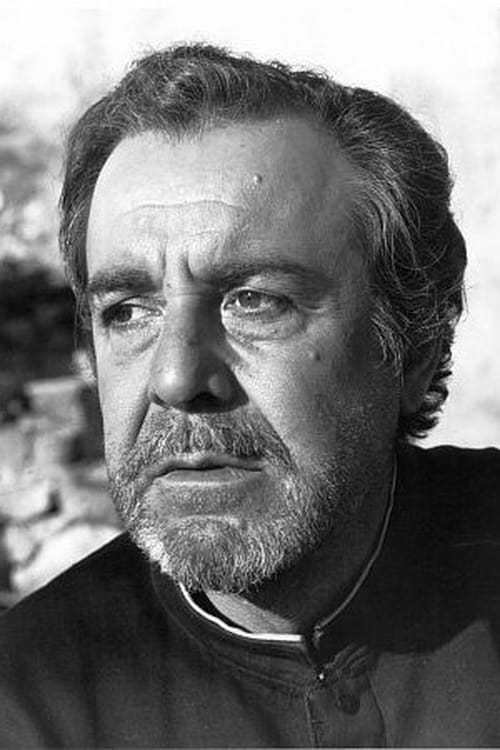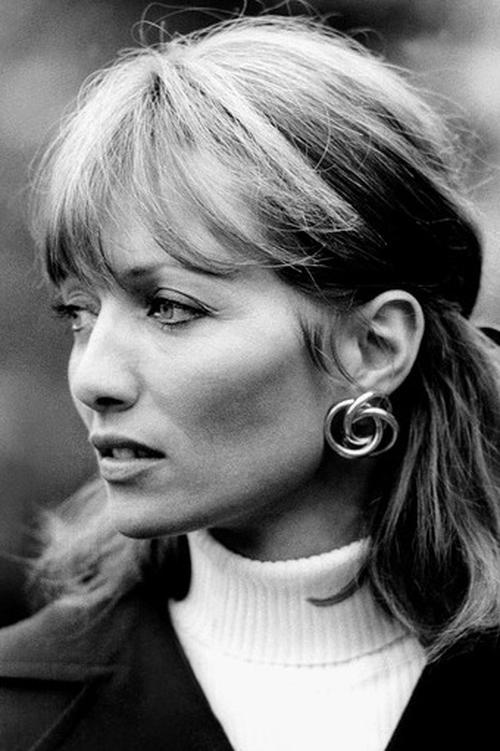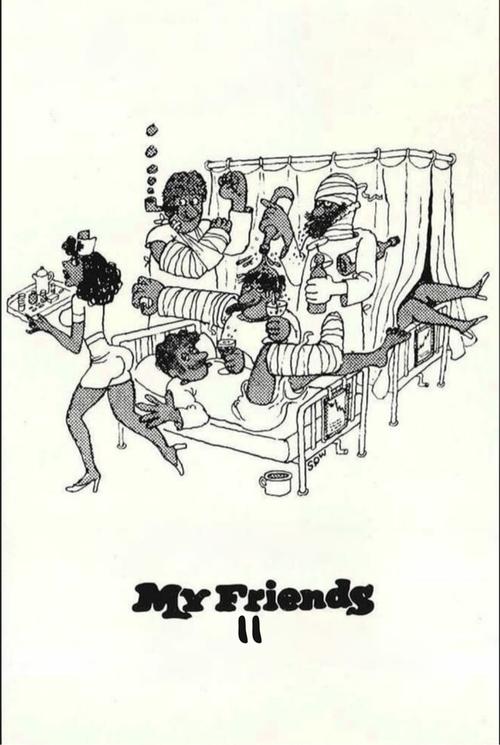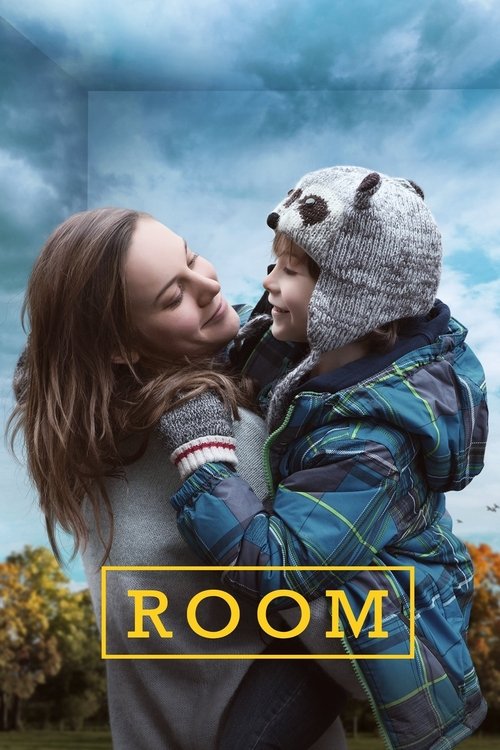
The Discreet Charm of the Bourgeoisie
In Luis Buñuel’s deliciously satiric masterpiece, an upper-class sextet sits down to dinner but never eats, their attempts continually thwarted by a vaudevillian mixture of events both actual and imagined.
Dialogues from Movie The Discreet Charm of the Bourgeoisie
Quotes from Movie The Discreet Charm of the Bourgeoisie
Memorable Scenes from Movie The Discreet Charm of the Bourgeoisie
The Dinner That Never Happens
In this surreal film, a group of friends is repeatedly interrupted just as they are about to enjoy a meal together. The build-up happens when the characters arrive at the dinner host's home, all feeling optimistic and excited about the evening. But just as they sit down, they are interrupted by various bizarre incidents—a funeral procession, a military parade, and odd conversations that prevent them from ever eating. The pivotal moment peaks when the group finally realizes they will never actually have the meal, representing their struggles against societal conventions and the absurdity of life. This scene profoundly emphasizes the irony of aspiration and reality. The aftermath leaves the characters frustrated and reflective, creating a sense of existential dread that lingers. The emotional reaction from viewers is a mix of laughter and sadness, as they empathize with the characters' futile desires. Overall, this scene connects brilliantly to themes of bourgeois aspirations versus harsh realities.
Context: This scene highlights the characters' ongoing fight against the monotony of their social lives and serves as a metaphor for the barriers they face in achieving true fulfillment.
Dream Sequences
There are several dream sequences throughout the film that take the audience into a surreal realm where the characters express their unconscious desires and fears. Each dream feels more intense than the last, culminating in moments that blend fantasy and reality. The peak occurs when one character finds themselves in a bizarre alternate reality that forces them to confront uncomfortable truths about their desires, leading to shocking revelations. The aftermath is disorienting, as the line between dream and reality blurs, leaving both characters and viewers questioning their own perceptions. This sequence evokes feelings of confusion and reflection, making people think deeply about their own hidden desires. It emphasizes the theme of appearance versus reality, standing out as a striking blend of absurdism and intrigue.
Context: These dreams allow the filmmakers to explore deeper topics related to morality and desire while challenging the audience's understanding of what is real and what is imagined.
The Death Scene
In one poignant moment, a character witnesses the death of a close friend during a strange encounter. The build-up occurs as they talk about their lives, revealing their shared dreams and regrets. The pivotal moment hits hard when the friend suddenly collapses, showcasing the fragility of life in the most sudden manner. This shocking twist leads to the survivors reflecting on their mortality and the meaningless of their social pretensions. The aftermath is heavy, leaving characters grappling with grief, and viewers feeling a mix of shock and sadness. It highlights the film's themes of mortality and the superficiality of bourgeois life, making it a standout moment. The emotional weight resonates deeply, as audiences often relate to the suddenness of loss.
Context: This moment forces both characters and viewers to confront the often-ignored reality of death, blending it perfectly into a narrative filled with absurd humor.
The Rights of the Dead
In a surreal twist, the characters engage in a bizarre discussion about the rights of the dead and their afterlife expectations during a dinner conversation. The build-up is filled with witty banter and philosophical musings, reflecting on societal norms. The pivotal moment comes when they debate the absurdity of their own beliefs about the dead. This strange dialogue leads to a comedic yet dark realization about how people romanticize death. The aftermath leaves the group exposed and vulnerable, revealing their ignorance about life and death. This scene evokes laughter mixed with discomfort, making it memorable for its boldness. It emphasizes the film's central themes of human absurdity and the illusions of social customs.
Context: By touching on the heavier themes of life and afterlife while keeping a humorous tone, this scene brilliantly showcases the blend of satire and depth in the film.
The Ambiguous Ending
As the film draws to a close, the characters are left in a perplexing situation that seems to spiral into more confusion rather than resolution. The build-up involves a series of failed attempts at achieving happiness, highlighted by the growing absurdity of their circumstances. The pivotal moment occurs when the characters part ways without any sense of closure, leaving viewers to ponder what has truly happened. As they walk into the unknown, the emotional weight of their unresolved journeys becomes clear. This ambiguous ending impacts how viewers reflect on societal norms and personal desires. The feelings of uncertainty echo long after the credits roll, making it a profoundly haunting moment. It stands out for allowing audiences to define their own interpretations of the narrative's end.
Context: This ending captures the essence of surrealism and reinforces the themes of societal failure, mirroring real-life uncertainties.
The Ill-fated Picnic
A picnic scene turns bizarre as the characters experience a series of unfortunate events, including the uncontrollable behavior of animals and unexpected weather. The build-up includes their excitement and hope for a peaceful day outdoors, but as chaos ensues, the pivotal moment reveals how their plans are continually thwarted. The aftermath leaves them drenched and frustrated, highlighting how their bourgeois expectations are constantly met with absurd interruptions. Viewers feel a mix of amusement and relatability as they witness relatable frustrations turned surreal. The scene underscores the themes of life’s unpredictability and the farcical nature of social gatherings.
Context: This picnic represents the idealized version of leisure that quickly devolves into chaos, reflecting the fragility of social dreams.
The Crime Scene
A sudden confrontation with the police during a supposed crime scene invites a bizarre mix of humor and absurdity. The build-up creates tension as characters scramble to explain themselves, hoping to maintain their social decorum. The pivotal moment peaks when they realize the absurdity of their explanations, leading to laughter amidst chaos. The aftermath is revealing, as they face the reality of their own pretensions clashing with authority. Viewers are entertained yet thoughtful, as the scene highlights the characters' struggle against societal expectations and the absurdity of their privileged lives. The emotional reaction is both comedic and critical, reflecting a satire of bourgeois values.
Context: This scene serves to critique the superficiality of social status in the face of real authority and chaos.
The Elusive Waiter
Throughout the film, a mysterious waiter becomes a symbol of unattainable service and the characters’ increasing frustration. The build-up shows characters calling for what they want but never achieving it. The pivotal moment comes when they finally encounter the waiter, who behaves strangely, further complicating their dining experience. The aftermath leaves them bewildered and agitated, emphasizing the strange nature of their desires and the farce of their social situations. This evokes feelings of frustration and humor in viewers—common cries of needing something that feels perpetually out of reach. The scene cleverly explores the theme of dissatisfaction within social constructs.
Context: The waiter acts as a metaphor for the unattainable nature of their desires, creating a sense of surreal humor.
The Disintegration of Civilized Behavior
In a series of chaotic interruptions, the characters find themselves losing their civilized demeanor during increasingly absurd scenarios. The build-up sees them attempting to adhere to social niceties. The pivotal moment hits when they are forced to confront their primal instincts and desires, leading to a breakdown of polite behavior. The aftermath is a chaotic display that reflects their true nature, bringing laughter mixed with introspection. Viewers are struck by the contrast between societal expectations and raw human instincts. This moment powerfully resonates with the theme of the absurdity of social conventions versus real human behavior.
Context: This disintegration serves as a critical examination of the veneer of civilization, challenging the audience’s perceptions of social norms.
The Conflicting Ideologies
At a particular point in the film, characters engage in a heated discussion about differing perspectives on wealth and happiness. The build-up surrounds their obvious class distinctions and conflicting desires. The pivotal moment erupts when one character bluntly challenges another's values, sparking an intense debate. The aftermath is charged with tension as underlying resentments surface, exposing cracks in their friendships. Viewers feel a combination of tension and reflection, as they relate to the struggles of differing viewpoints that resonate in real life. This scene stands out for its raw honesty and critique of class differences.
Context: This discussion encapsulates the heart of the film's examination of bourgeois values clashing with deeper human truths.
The Artistic Interlude
An artistic performance interrupts a dinner party, shifting the dynamics entirely. The build-up showcases characters' mixed reactions, some intrigued and others dismissive. The pivotal moment occurs during a particularly stunning dance that defies explanation and brings a moment of reflection. The aftermath sees guests stirred by the performance, leading them to question their own realities. This moment resonates deeply with viewers, evoking feelings of awe and inspiration, inviting them to reflect on their own creative aspirations. The artistic interlude emphasizes the theme of seeking beauty amidst chaos.
Context: This scene serves as a commentary on the transformative power of art, revealing the characters’ hidden yearnings for something beyond their mundane lives.
The Subversive Ending
The conclusion of the film sees the characters confronting the empty nature of their pursuits. The build-up builds tension as they reflect on their absurd experiences throughout the night. The pivotal moment is their final, poignant realization that they’ve merely danced around serious issues without engagement. The aftermath leaves viewers feeling contemplative and slightly unsettled, as the characters appear adrift in their lives. This evokes feelings of both disillusionment and profound understanding. The emotional weight lingers, allowing viewers to ponder their own desires and societal roles. This ending powerfully ties back to the film’s themes of existentialism and social critique.
Context: The subversive ending encapsulates the film's commentary on the futility of societal expectations, compelling audiences to reflect on their own lives.
The Flawed Aspirations
In a fantastical segment, characters indulge in their flawed aspirations of luxury and sophistication, only to find themselves in ridiculous situations. The build-up entices viewers with the allure of bourgeois life, filled with dreams of grandeur. The pivotal moment erupts as they encounter the absurdities of their aspirations firsthand, leading to slapstick moments that reveal their shortcomings. This aftermath leaves the characters and viewers amused yet reflective on the pitfalls of materialism. Audiences relate to these flawed dreams, experiencing a mix of joy and embarrassment. This scene stands out for its humorous take on the superficial nature of social climbing.
Context: This sequence highlights the differences between appearance and reality, exposing vulnerabilities in social ambition.
The Moment of Banal Reflection
Amidst the absurdity, one character breaks the fourth wall, sharing a banal but poignant reflection on life and the search for meaning. The build-up is quiet amidst chaotic humor, creating an unexpected sincerity. The pivotal moment occurs as the character speaks directly to the audience, revealing personal thoughts that connect deeply with viewers. The aftermath invites contemplation, letting the weight of their words linger in the atmosphere. This scene ignites a sense of vulnerability, prompting a heartfelt resonance among viewers. It stands out as a moment of raw humanity within the surreal narrative, sharing the central theme of seeking deeper meaning amidst chaos.
Context: This moment bridges the distance between viewer and character, inviting introspection and connection.
Download App
Behind the Scenes from Movie The Discreet Charm of the Bourgeoisie
Unconventional Structure
The film is noted for its unique narrative style, which loosely ties together a series of disconnected vignettes that reflect the absurdity of bourgeois life.
Why it matters: This unconventional structure reflects director Luis Buñuel's intent to critique societal norms, ultimately making the film a commentary on the bourgeoisie that resonates with viewers even today.
Improvisation in Key Scenes
Many of the conversations between characters were largely improvised, allowing actors the freedom to explore their characters more deeply.
Why it matters: This improvisation led to more natural performances, capturing the absurdity and surrealism that became a hallmark of Buñuel's style, contributing significantly to the film's overall ambiance.
The Dinner Party Scene
The film features multiple dinner party scenes that ultimately never come to fruition, which was a deliberate choice by Buñuel.
Why it matters: This recurring motif emphasizes the element of lost opportunity and frustration, serving as a metaphor for the superficial nature of bourgeois aspirations.
Censorship Challenges
The film faced significant censorship challenges in various countries due to its provocative themes and religious undertones.
Why it matters: These challenges heightened discussions about censorship in film, and once released, the movie gained a cult status as a symbol of brave artistic expression.
Surrealist Influences
Buñuel incorporated surrealist techniques, such as dream-like sequences and illogical narrative progression, which were staples of his prior works.
Why it matters: This adherence to surrealism not only influenced the film’s overall tone but also encouraged audiences to interpret the reality vs. illusion theme, leaving a lasting impression on viewers.
Symbolism of Food
Food in the film often serves as a symbol of wealth and social status, particularly in scenes where extravagant meals are disrupted.
Why it matters: These disruptions highlight the fragility of the bourgeois lifestyle, amplifying themes of disillusionment and dissatisfaction that fuel the characters’ interactions.
Recurring Themes of Death
The film occurs amidst various death motifs, including frequent encounters with corpses and discussions about mortality.
Why it matters: This thematic choice reflects the existential dread lurking beneath the bourgeois facade, encouraging viewers to confront uncomfortable truths about life and society.
Collaborative Scriptwriting
The screenplay was co-written by Buñuel and his longtime collaborator Jean-Claude Carrière, blending their individual styles.
Why it matters: This collaboration ensured a rich tapestry of ideas, strengthening the thematic depth and narrative cohesion of the final product.
The Significance of the Police
The presence of police in the film reflects the tension between authority and the bourgeois lifestyle, often depicted as oblivious to the absurdities around them.
Why it matters: This choice emphasizes the critique of bourgeois complacency and the absurdity of their existence, enhancing the film's overall impact.
Set Design and Symbolism
The film’s lavish sets and décor were intentionally overdone to symbolize the superficial nature of bourgeois culture.
Why it matters: This aesthetic choice underscores the critique of materialism, making it a powerful visual commentary that aligns with the film's themes.
Directorial Cameo
Buñuel makes a brief cameo in the film, which is a nod to his presence as the creative force behind the narrative.
Why it matters: This self-insertion creates an amusing layer of irony, allowing audiences to consider the role of the director in crafting the identities and actions of characters.
The Role of Music
The use of classical music throughout the film contrasts with the absurd nature of the scenes, adding depth to the emotional landscape.
Why it matters: This juxtaposition heightens the film’s surreal quality, reinforcing the disconnection between the characters’ aspirations and their actual lives.
Cinematography's Influence
The cinematography by Humberto D’Alton employs fluid camera movements that create a rhythmic pace, enhancing the film's dream-like quality.
Why it matters: This stylistic choice immerses the viewer into Buñuel's surreal world, making the critique of the bourgeoisie more palpable through visual storytelling.
Focus on Social Commentary
The film is intentionally devoid of a clear resolution, underscoring the cyclical nature of the characters’ empty pursuits.
Why it matters: This choice solidifies the film's message about the futility of the bourgeois lifestyle, provoking deeper contemplation among viewers about their own lives.
Download App








